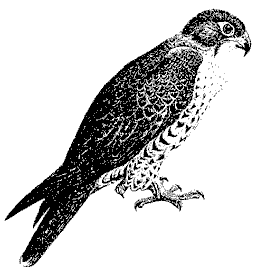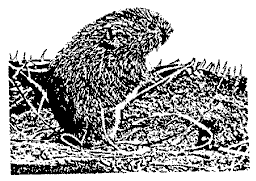 |
Science Frontiers ONLINE No. 99: May-Jun 1995 |
|
|
When Scents Make No Sense
 A kestrel (sparrow hawk) with ultra-violet-sensitive eyes and an appetite for voles (below)
|
The world of kestrels -- eaters of voles -- is one of sight. Now, voles are hard to see in the grass far below a hunting kestrel, but evolution has come to the aid of the kestrels by giving them the capability to see in the ultra-violet portion of the spectrum. Can it be only coincidence that the urine trails of the voles happen to absorb ultra-violet light strongly? Kestrels can see these trails as dark streaks in the grass below and zero in on their prey.
Finnish scientists, led by E. Korpimaki at the University of Turku, have demonstrated the above ultraviolet connection by somehow acquiring enough vole urine to lay out artificial trails in voleless areas. Sure enough, hunting kestrels were attracted to the experimental site and searched and searched the artificial vole highways -- volelessly.
(Aldous, Peter; "Vole's Urine Is Their Downfall," New Scientist, p. 15, February 4, 1995. Gee, Henry; "In the Eye of the Kestrel," Nature, 373:387, 1995)
Comment. Even as you read this, evolution is surely helping the voles by altering the ultraviolet signature of their urine! Sure, this is a bit facetious, but predator-prey relationships are always seesawing. We see this vividly in organisms with very short generation times, such as in antibiotic-resistant malaria.
